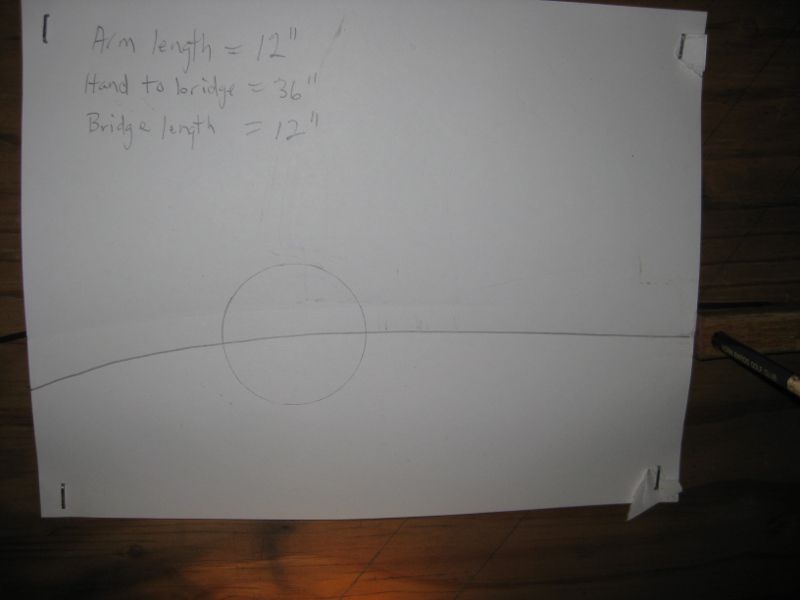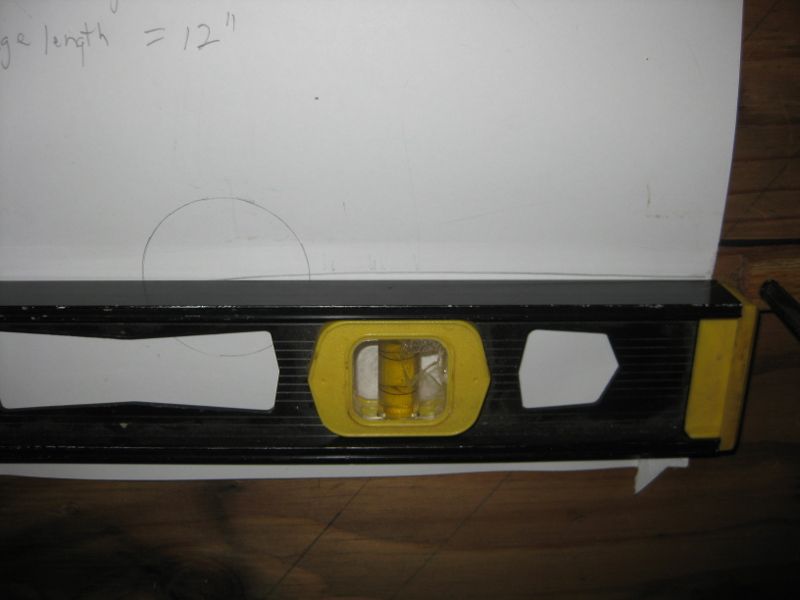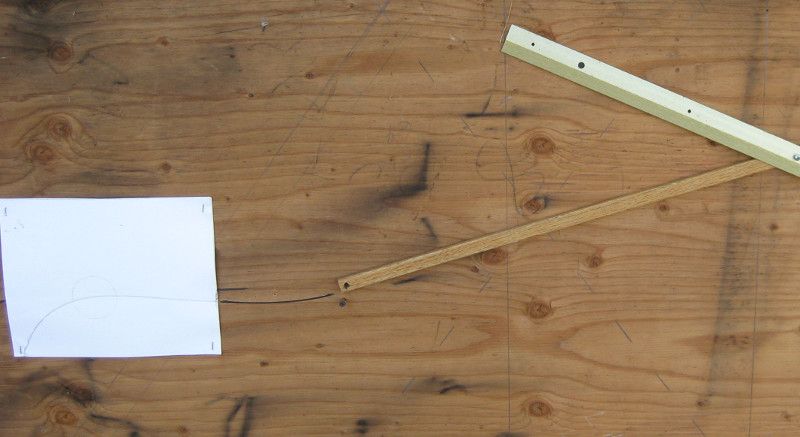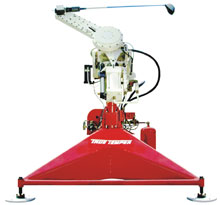I constructed a machine that will give a demonstration of the cue tip path with a purely mechanical pendulum stroke. All dimensions were set by measuring my arm/bridge/stroke lengths.

The length of the arm is approximately 14 1/2"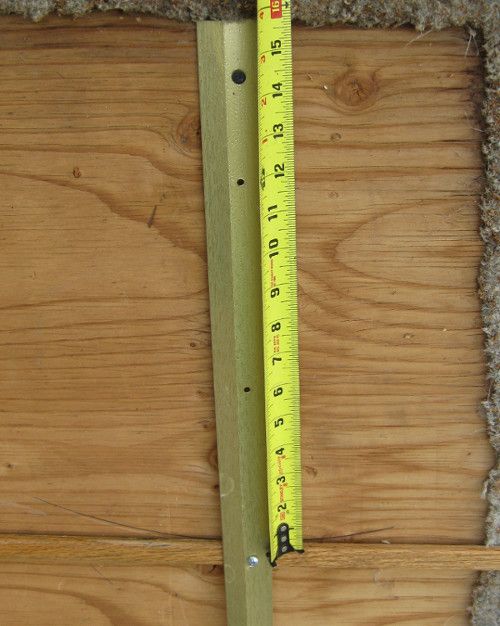
Arm to bridge is just under 40" with the arm plumb, I did not photograph that as my arms were not long enough to hold the camera and tape measure.
The bridge length is approximately 8".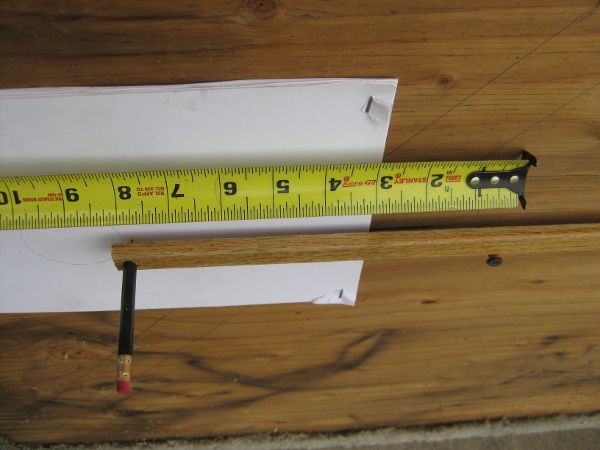
The paper is standard 8 1/2 by 11" and the circle drawn on it is 2 1/4".
It was set so the pencil was close to but not touching the circle with the arm plumb. This is the line scribed by the pencil when drawing the arm back and then going forward with the shaft resting on the bridge.
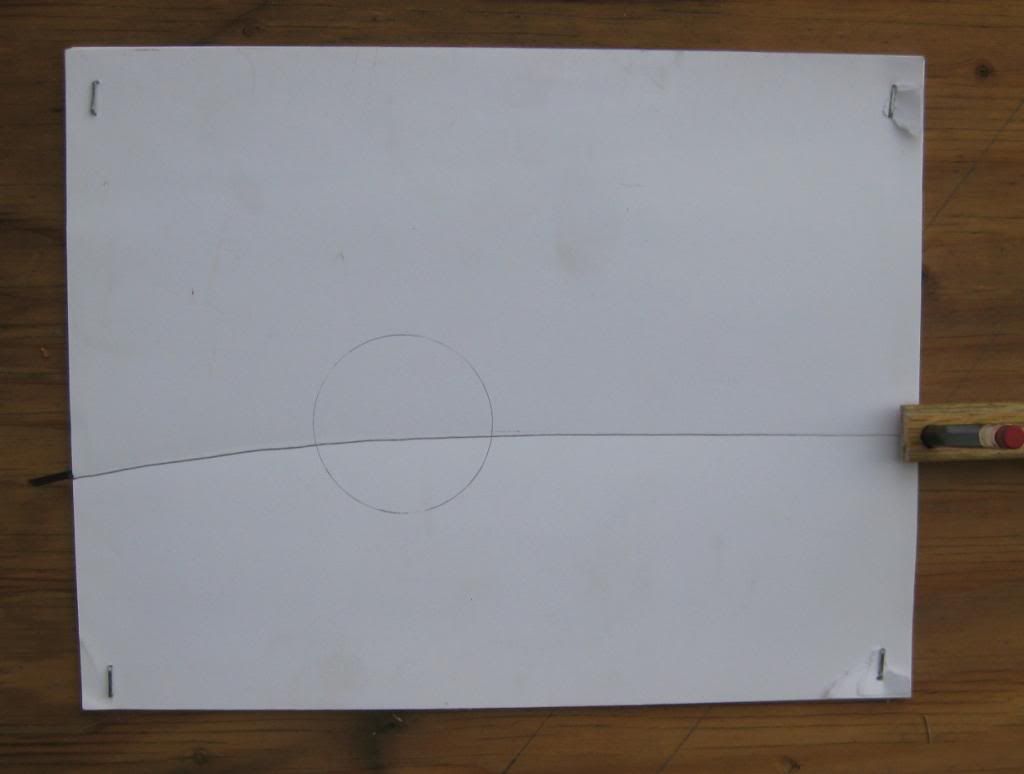
This last picture shows the stroke line versus a straight line.

This is less variation than I had expected. The change in the length of the lever arms accounts for the smaller variation from straight when the cue is drawn back with the tip closer to the bridge.
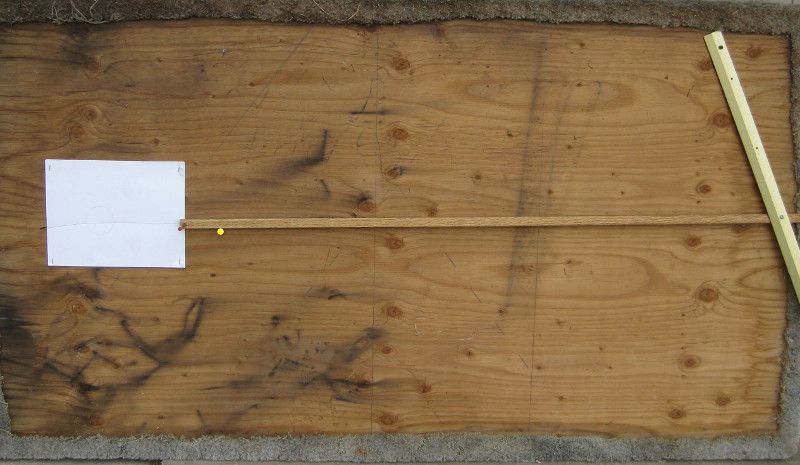

The length of the arm is approximately 14 1/2"

Arm to bridge is just under 40" with the arm plumb, I did not photograph that as my arms were not long enough to hold the camera and tape measure.
The bridge length is approximately 8".

The paper is standard 8 1/2 by 11" and the circle drawn on it is 2 1/4".
It was set so the pencil was close to but not touching the circle with the arm plumb. This is the line scribed by the pencil when drawing the arm back and then going forward with the shaft resting on the bridge.

This last picture shows the stroke line versus a straight line.

This is less variation than I had expected. The change in the length of the lever arms accounts for the smaller variation from straight when the cue is drawn back with the tip closer to the bridge.

